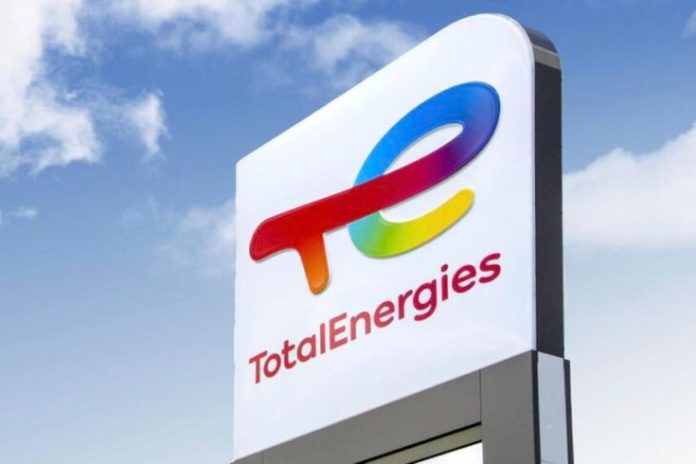TotalEnergies has released its Energy Outlook 2025, a sweeping analysis of the world’s energy system through mid-century, mapping three possible futures for the transition to low-carbon energy. Presented from Paris in early November, the report underscores an uncomfortable truth, even with accelerating renewables and policy ambition, fossil fuels are likely to remain the backbone of global energy through 2050, supplying about 60 percent of total demand compared with 80 percent today.
The French major’s projections are not predictions of failure but a reminder that the transition is still a work in progress, deeply shaped by affordability, regional inequality, and geopolitical limits.
At the heart of TotalEnergies’ findings lies a central tension that will resonate strongly across Africa: how to expand access to reliable, affordable power for billions of people while reducing emissions fast enough to align with global climate targets. The company frames the challenge simply, more energy, fewer emissions.
Its analysts model three scenarios: Trends, in which current policies continue; Momentum, where coordinated national actions drive faster progress; and Rupture, a high-ambition pathway that keeps warming below 2°C. The difference between them is stark. Under the least ambitious scenario, global temperatures could rise by as much as 2.8°C by 2100; under the most coordinated, the increase could be limited to around 1.7°C.
The Outlook reflects a pragmatic view of the global system rather than an idealized one. TotalEnergies observes that electricity, transport, and heating together account for over 14 billion tones of carbon dioxide emissions every year, nearly three-quarters of all energy-related emissions. Even as renewables meet 80 percent of the growth in new electricity supply, demand is climbing faster than decarbonization can keep pace. Emerging economies, from India to Nigeria, are expanding energy access and industrial capacity, often relying on fossil fuels as the fastest path to reliability and growth.
For Africa, this dynamic captures the dilemma at the center of its development narrative. The continent accounts for roughly 17 percent of the global population but just 4 percent of global energy use. In Sub-Saharan Africa alone, more than 600 million people still lack electricity. As economies industrialize, demand for transport fuels, industrial heat, and electricity will surge. TotalEnergies’ analysis implies that Africa’s path to net zero cannot mirror that of Europe or North America; it must balance developmental urgency with realistic technology deployment and cost management.
Regional disparities highlighted in the report point to the uneven geography of transition. The United States, buoyed by abundant shale gas and clean tech incentives, has reduced emissions while achieving net energy exporter status. Europe leads in regulation and emissions cuts but faces high infrastructure costs and social resistance to rising energy prices. China, while still expanding coal, is simultaneously driving down global costs of solar, batteries, and electric vehicles through scale manufacturing.
Africa’s position in this global picture is both fragile and strategic: it holds the largest untapped renewable potential, vast critical minerals, and the youngest workforce, but also suffers from chronic underinvestment in power infrastructure and capital access.
TotalEnergies’ scenarios outline how these constraints might evolve. In its Momentum pathway, OECD countries reach net zero by 2050 and China by 2060, while natural gas plays a stabilising role in developing regions. Hydrogen and sustainable fuels bridge the gap for non-electrified sectors. But even here, the company expects fossil fuels to remain integral to energy security and industrial supply chains for decades.
The Rupture scenario; the only one compatible with the Paris Agreement’s “well below 2°C” target, would demand unprecedented global coordination, massive renewable buildout, and accelerated coal phase-outs. TotalEnergies is candid in its assessment: such cooperation remains unlikely in the near term.
The report’s most significant intervention, however, lies in its call for global carbon cooperation. TotalEnergies argues that achieving progress beyond the current trajectory will depend on fully implementing Article 6 of the Paris Agreement, the framework for international carbon markets. The company promotes what it terms “global carbon arbitrage”: reducing emissions wherever it is cheapest to do so.
This mechanism could unlock new financing streams for developing regions, enabling African countries to host carbon-reduction projects and sell verified credits into international markets. But the success of such a system depends on integrity, transparency, and equitable benefit sharing, conditions that have too often faltered in past carbon trading schemes.
Aurélien Hamelle, TotalEnergies’ President for Strategy and Sustainability, emphasized the importance of pragmatism. “Affordable low-carbon technologies are expanding rapidly,” he noted, “but fossil fuels will still represent 60 percent of primary energy demand in 2050. What matters now is accelerating the most affordable CO₂ reduction solutions and creating global mechanisms that scale impact.” The statement reflects a realism often missing from policy rhetoric: the transition must be affordable if it is to be durable.
For Africa, the implications of this outlook are double-edged. On one hand, it highlights the persistence of hydrocarbons as part of the global mix, reinforcing the case for responsible utilization of gas resources as a bridge fuel. On the other, it calls for faster integration of renewables and stronger participation in carbon markets to avoid being locked out of future green trade. The Energy Outlook 2025 thus reads less as a forecast and more as a warning, that unless global cooperation deepens and capital flows to where decarbonization is most cost-effective, the world’s path to a sustainable energy future will remain fragmented.
Engage with us on LinkedIn: Africa Sustainability Matters






